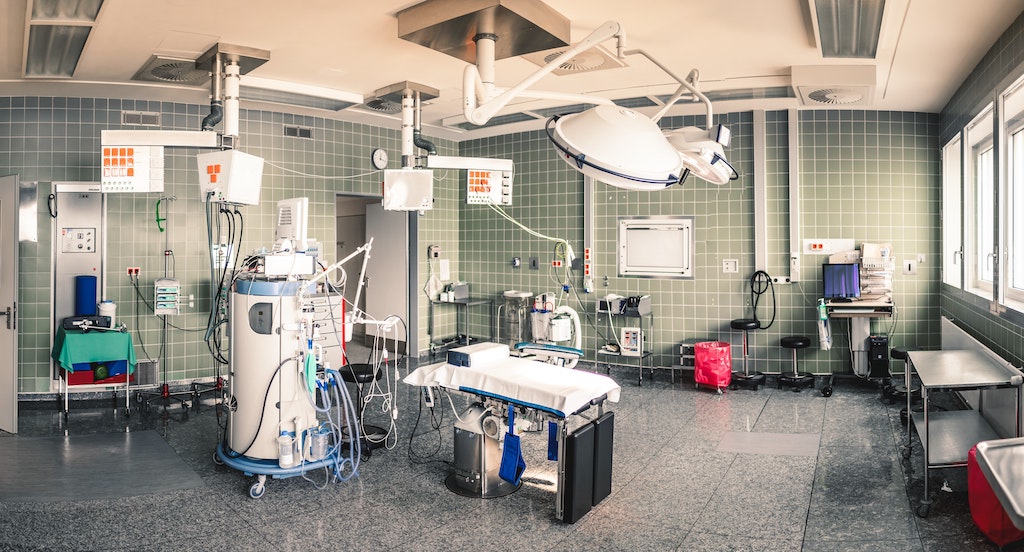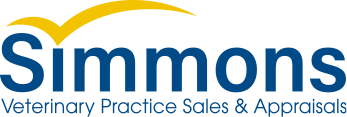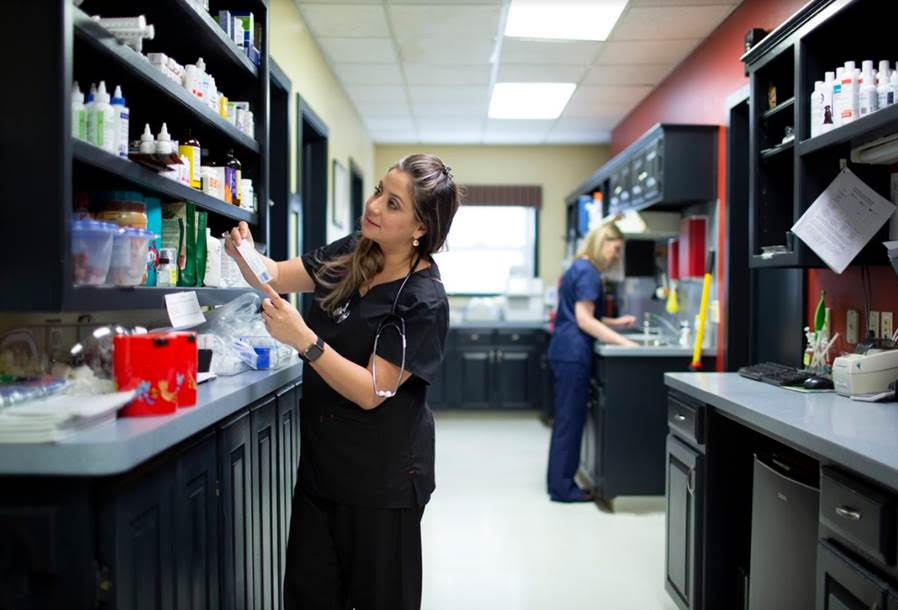Veterinary staffing costs are one of the most significant expenses in a veterinary practice. Controlling these costs remains one of the most challenging issues for most practice managers and owners. Even in actively managed practices, it still can be a struggle to get staffing to an optimum and replicable level.
Looking into vet practice staff expenses, it is crucial to remember that work will expand to fit the time available. This creates the perception that there is always plenty of work to fill everyone’s day, even when practice is overstaffed.
To objectively assess your staffing expense, it is important to rely on objective benchmarks. This helps you focus on objective data and assess whether staffing changes are needed.
The following are several reference points that we feel are key to evaluating your staffing expenses.
Support Staff Costs as % of Revenue
Support staff includes all of the non-veterinary staff, including management and custodial. The total support staff expense in a financially healthy animal hospital (including benefit costs) is typically kept below 23-25% of revenues. This tends to break into 16-19% of income for wages and 5-8% for benefits. The benefit costs include all costs associated with health, dental, worker’s compensation, and other insurances, retirement benefits, the owner’s portion of employment taxes, continuing education, and any paid vacation, holiday, and personal days.
Management Costs as % of Revenue
The non-owner management often includes hospital administrators, practice managers, and inventory managers. Depending on the practice size, this may be one person, or it could be multiple people. Regardless, as a general rule, the expense for the wages not including benefits should not exceed 2-3% of revenues. To properly assess this, it may be necessary to include a portion of the wages for those staff members who fill dual roles, such as technicians who also are responsible for inventory management or office managers who also work in reception.

Staff per Veterinarian
Comparing your staff hours per veterinarian hour to the veterinary industry benchmark is a strong reference. Per AAHA’s “Financial & Productivity Pulsepoints,” the average full-time equivalent (FTE) staff per FTE veterinarian is around 4.0. To calculate yours, divide the total staff hours by the number of doctor hours for the same period.
It is important to note that this is a reference point only. There are limits on how applicable this reference is to individual practices. Whether it is appropriate or not can be influenced by variations in hospital fees, average transaction costs, the types of services provided, and the levels of revenues generated by non-veterinary staff. Therefore, it is sometimes helpful to also measure and track how much revenue the practice generates per hour of operation against the number of staff that it needs to support.
The above provides different tools to assess your staffing expense. If they indicate that you have an opportunity to improve, then you can take the time to dig deeper. If you need to dig deeper, or you want to prevent your staff costs from getting out of control, here are several common pitfalls to avoid:
Not Adjusting the Hours to the Current Demand
For many general practices, the spring and summer months are much busier than fall and winter. During the busy months, practice owners will often find themselves increasing staff hours or hiring additional staff members to meet the demand. This is good. However, when the schedule lightens, many owners and managers are hesitant to reduce the staffing hours when the rush is over.
This higher staffing level creeps in and gradually becomes the “new normal,” which goes unnoticed. As workload decreases, the staff will find “make-work” projects such as cleaning and organizing workspaces. While good to do when needed, this work does little to generate income to meet payroll needs. Associates and staff adapt their work pace to meet the lesser demand. The make-work grows to fill the time, but the revenues in the slower months level off. Thus the practices’ veterinary payroll percentage increases, decreasing profits.
The problem gets worse when the cycle continues and the next busy season approaches. As patient load increases, the staff who have adjusted to the new normal feel the stress of a busier schedule. This results in the “we need more help” distress signal to the manager/owner.
This is a cycle that can sneak into any practice – but it is not sustainable. It is better to continually adjust your staff scheduling based on current demand, not on keeping everyone on the schedule.
Giving Raises According to Time Served
Owners and managers should avoid paying raises that are solely related to the passing of time. Instead, there are many factors that should be considered before increasing staff wages. Consider the value the employee has created respective to their position – are they meeting the position’s expectations? Have they met the goals from their prior performance review? Do they want to take on more responsibility?
Management also needs to consider the practice’s ability to raise fees to meet the higher employment costs. Fee increases and raises are often linked in order for employees to understand that there is a connection between them, the timing of employee raises is often dictated by history and policy. Planning for the raises and associated increases in staffing costs is best addressed as part of the annual budgeting and fee-setting process. Set a schedule for both.
It is also essential to recognize the increases in the employee’s benefits package as a part of their wages. These often result in a raise even though the employee’s hourly wage did not change. An employee should receive an annual presentation that outlines their entire compensation package to appreciate all that they receive from working for the practice. It’s easy for employees to forget that their take-home pay is just part of the compensation they’re receiving.
Failure to Adjust Wages Downwards
When an employee is offered a higher wage to take on additional roles or responsibilities, ensure the expectations are clearly outlined. Employers will often raise an employee’s wage when adding medical or management responsibilities and the employee fails to grow into this role. The role may also no longer be warranted, when this happens it is challenging to return the wages to the prior level.
When a practice owner is unsure if the employee will be successful in a new role, it may be better to offer a change in wages on a provisional basis. Or pay the increase as a stipend that more directly relates to the added responsibilities.
Setting Schedules According to Employee Needs
A practice should schedule its employees based on the client’s demands. We continue to see many practices with large numbers of staff hours incurred outside of the regular appointment and surgery hours. Early morning hours spent preparing for the day before client arrival seem very popular with employees. Unfortunately, revenue is not generated during these hours to justify significant numbers of staff hours incurred.
It can be beneficial to accommodate valued employees where possible and to try to meet personal schedule limitations. However, the needs of the practice must take priority. It’s necessary to ensure that adjusting schedules isn’t at a cost to the client or patient service or to the practice’s financial health.
Many practices benefit from staggering schedules between staff members to allow each employee some flexibility in meeting personal demands. With the majority of staff scheduled during peak client and appointment times.
Simmons Helps You Figure it Out
Many practices have a general awareness of these issues, but they do not schedule the time to assess this large expense category. It is a common reason that many practices are not financially healthy. It is just too easy to run on auto-pilot and let the staffing “just happen” instead of actively managing it.
Take a look at your numbers. If they are not where they should be, perhaps it is time to really set aside the time and assess how you are using your team. When it comes time to have your practice appraised, you want to be confident that you have properly managed your biggest investment in your practice. Reach out to the team at Simmons Veterinary Practice Sales and Appraisals today to learn more.
-=-=-
David McCormick, MS, CVA and Sherry Everhart, RVT are veterinary practice appraisers, brokers and practice management consultants at Simmons Mid-Atlantic. They can be reached at 888.881.7084.



